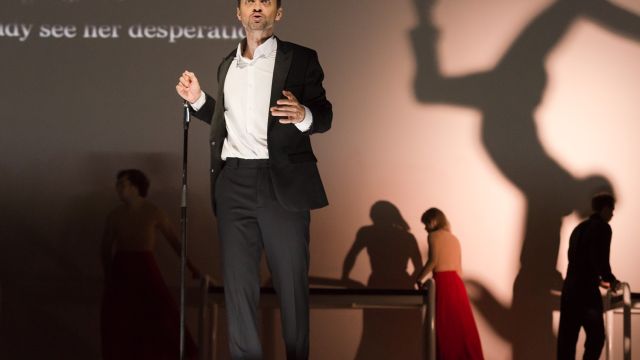Orpheus & Eurydice
When Gluck composed his version of the ‘Orpheus’ legend in 1762, there were fourteen other operas on the same subject, but Gluck’s version cut a swathe of originality across the then existing opera landscape for its revolutionary style and form and became enormously influential on the genre.
Opera Queensland’s production mirrored the originality of the original concept in an austere and thoroughly engrossing production which married the resources of the company with those of Brisbane’s internationally famed Circa ensemble.
On a searing white-hot box set representing an insane asylum, the myth of Orpheus descending into hell to rescue his bride Eurydice from Hades, was played out using two voices and a chorus. Aerial tricks, incredible balancing feats and tumbling feature in this cross-fertilization production that was dominated by the superb singing of counter-tenor Owen Willetts as Orpheus.
No stranger to the part, Willetts brought a rich, clear and powerful tone to a role that was originally written for castrati. His anguish was palpable, his high tessitura honey. Barefooted and athletic, even his physical feats with the ensemble (walking on shoulders whilst singing) were as breathtaking as his vocal prowess. Opposite him as the two women in his life, Natalie Christie Peluso was just as vocally enchanting, passionate as Eurydice, alluring and enticing as Amor.

Circa’s artistic director,Yaron Lifschitz’s production opened dynamically with a woman descending on ropes into the Underworld. Orpheus finds himself alone immersed in grief and guilt he may have killed Eurydice. Hell is a place inside his head and the ensemble become fragments of his psyche. As a concept it was cutting-edge, stylised but effective. His choreographed movement was at times classical ballet, at others sheer athletic circus skills which complimented Gluck’s revolutionary melodic canvas.
Moving the opera chorus, mainly dressed in black, around the perimeter of the action only increased the tension of the drama.
Costumes (Libby McDonnell), lighting (Alexander Berlage) and video (Boris Morris Bagattini), strikingly enhanced the production, whilst Dane Lam, returning to Opera Queensland for the first time since he conducted Jonathan Henderson’s Dirty Apple in 2009, brought lustre and elegance to Gluck’s iconic score with the Queensland Symphony Orchestra.
The standing ovation and prolonged applause were well deserved.
Peter Pinne
Photographer: Jade Ferguson
Subscribe to our E-Newsletter, buy our latest print edition or find a Performing Arts book at Book Nook.

